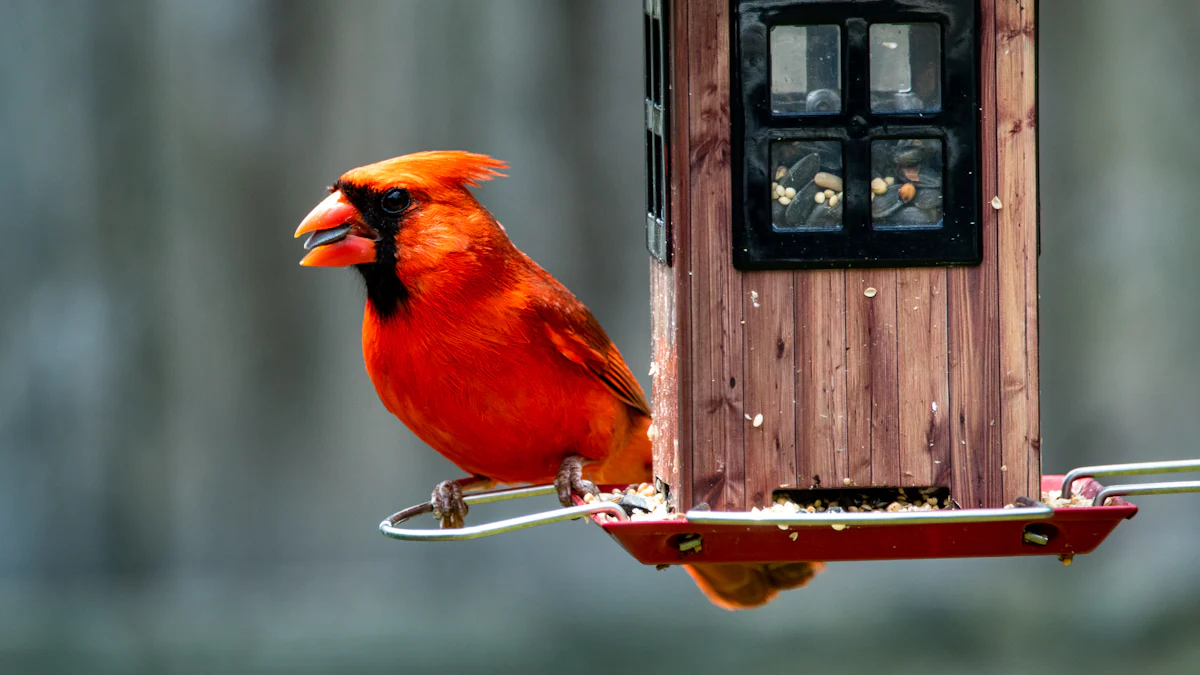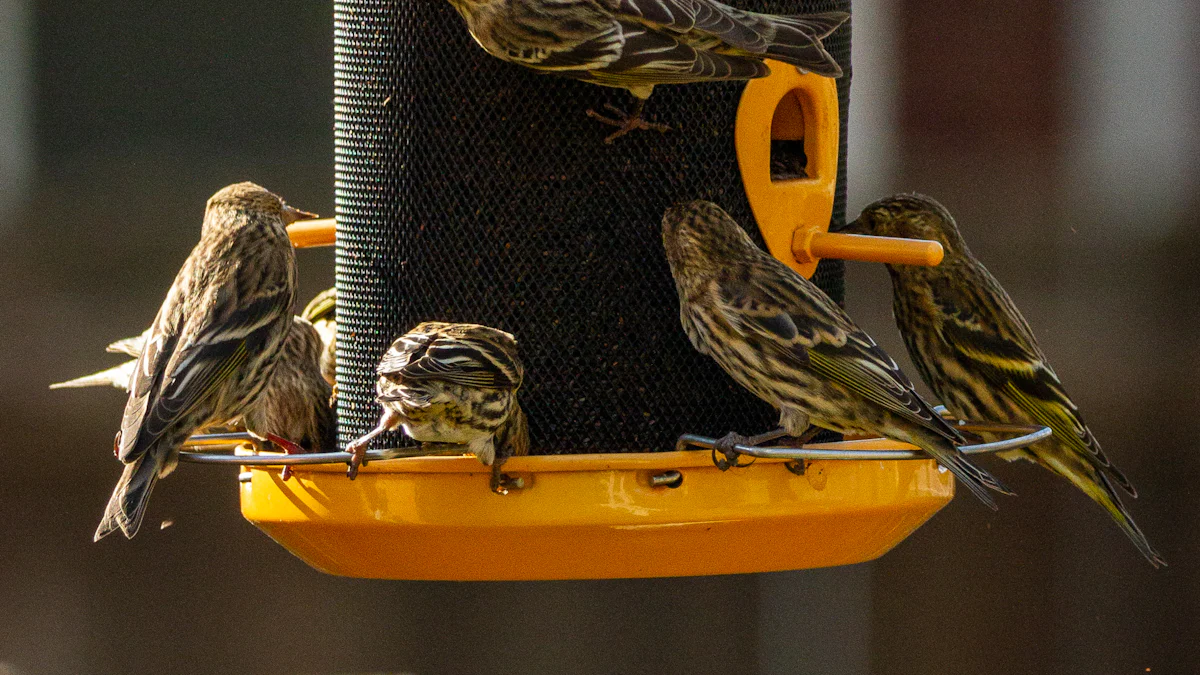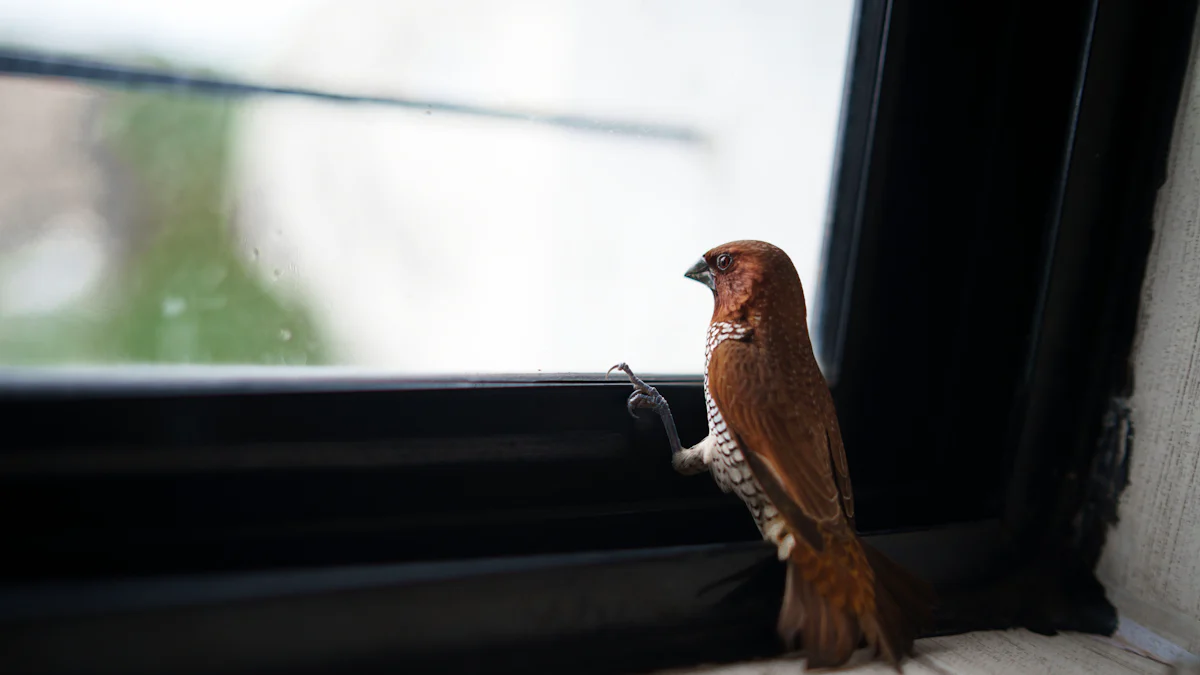
Protecting birds is crucial in today's world, where their populations face significant challenges. With a 30 to 77 percent decline in bird numbers since 1970, taking action is more important than ever. This blog will guide you through simple yet impactful ways to create a safe haven for our feathered friends. By implementing these strategies, you can make a real difference in protecting birds and preserving their habitats.
Creating a Bird-Friendly Environment

When creating a bird-friendly environment, it's essential to focus on providing food and water, planting native vegetation, and creating safe nesting sites. These elements play a crucial role in attracting and supporting our feathered friends.
Providing Food and Water
To start, consider setting up bird feeders in your yard. By offering a variety of seeds, nuts, or suet, you can cater to different bird species' dietary needs. Additionally, ensure that the feeders are kept clean and filled regularly to protect birds from illnesses.
For fresh water sources, consider installing a birdbath or shallow dishes. Birds not only need water for drinking but also for bathing and preening their feathers. This simple addition can make a significant difference in attracting more birds to your outdoor space.
When the weather gets hot, especially during summer, think about installing a dripper or mister near trees or shrubs. This will create a cool and moist environment that birds will appreciate during warmer days.
Planting Native Vegetation
Native plants play a vital role in providing shelter and food for birds. They attract insects, which are essential sources of protein for many bird species. Consider planting a variety of native plants in your garden to create a diverse ecosystem that supports different types of birds.
The benefits of native plants extend beyond food sources; they also provide nesting materials and safe hiding spots for birds. Some excellent choices include milkweed for monarch butterflies and various wildflowers that attract hummingbirds with their nectar-rich blooms.
Creating Safe Nesting Sites
For creating safe nesting sites, consider installing birdhouses around your property. These artificial shelters mimic natural tree cavities where birds can raise their young safely away from predators. Make sure the birdhouses are placed at appropriate heights with easy access for the birds.
In addition to birdhouses, protect natural nesting areas such as dense shrubs or trees from unnecessary disturbances. Birds often seek out secluded spots to build their nests, so maintaining these areas undisturbed is crucial for their breeding success.
To add an extra layer of protection, create a brush pile using fallen branches or twigs. This makeshift habitat offers cover for ground-nesting birds like sparrows or towhees while providing them with additional shelter options.
Preventing Bird Collisions

Making Windows Safer
When it comes to making windows safer for our avian friends, there are practical steps you can take to reduce the risk of collisions. Start by considering using window decals strategically placed on the glass. These decals create a visual barrier that birds can see, helping them avoid flying into the windows unknowingly.
Another effective method is installing screens or netting over windows. This physical barrier prevents birds from hitting the glass directly, acting as a protective shield while still allowing light to enter your home. It's a simple yet impactful way to safeguard birds in your surroundings.
To add an extra layer of protection, consider adding special tape to windows. This tape creates patterns that are visible to birds but nearly invisible from the inside, alerting them to the presence of a solid surface. By making these modifications, you can significantly reduce bird-window collisions and create a safer environment for our feathered companions.
Reducing Light Pollution
In addition to window safety measures, reducing light pollution is essential for protecting birds, especially during their nocturnal activities. Start by turning off unnecessary lights at night, both indoors and outdoors. Excessive artificial lighting can disorient birds and affect their natural behaviors, so minimizing light sources can help mitigate these disruptions.
Consider using bird-friendly lighting options that emit less intense or disruptive light wavelengths. These specialized fixtures are designed to minimize interference with avian navigation systems while still providing adequate illumination for human needs. By opting for bird-friendly lighting solutions, you can contribute to creating a more bird-conscious environment around your home.
Keeping Birds Safe from Predators
When it comes to protecting birds from potential dangers, focusing on managing domestic pets and deterring wild predators is essential. By taking proactive steps, you can create a safer environment for our feathered friends.
Managing Domestic Pets
To begin, consider the impact of your pets on local bird populations. Start by keeping cats indoors to prevent them from hunting birds. Cats are natural predators and can pose a significant threat to vulnerable bird species. By ensuring that your feline companions stay inside, you can reduce the risk of bird fatalities in your area.
Additionally, when supervising dogs in the yard, pay attention to their interactions with wildlife. While dogs may not actively hunt birds like cats do, their presence alone can disturb nesting sites or scare off birds. Keeping an eye on your canine companions while they are outside can help minimize any potential disruptions to local bird habitats.
Deterring Wild Predators
In addition to managing domestic pets, it's crucial to address the threat of wild predators in the vicinity. Consider installing protective barriers around your property to deter larger animals like raccoons or snakes from preying on birds. These barriers can range from fences to netting, depending on the specific predators in your area.
Furthermore, explore the use of natural deterrents to discourage unwanted visitors. Certain plants or scents can act as repellents for predators without causing harm to birds or other wildlife. Research local options that are safe and effective for keeping predatory animals at bay while maintaining a healthy ecosystem.
Reducing Chemical Hazards
When it comes to avoiding pesticides and herbicides, there are alternative methods that can benefit both birds and the environment. Consider using organic alternatives in your garden to protect birds from harmful chemicals. These natural solutions not only safeguard our feathered friends but also promote a healthier ecosystem for all wildlife.
Creating a chemical-free yard is another effective way to reduce hazards for birds. By eliminating synthetic pesticides and herbicides, you provide a safer environment for birds to thrive. Opt for eco-friendly products that are gentle on the environment while maintaining a beautiful outdoor space.
For the safe disposal of household chemicals, it's essential to follow proper guidelines to prevent harm to birds and their habitats. Dispose of chemicals responsibly through designated channels to minimize environmental impact. Additionally, consider switching to eco-friendly products that are less harmful to wildlife and ecosystems.
Supporting Bird Conservation Efforts
Buying Bird-Friendly Products
Supporting Bird-Friendly Coffee Brands
When it comes to supporting bird conservation efforts, one impactful way is by choosing bird-friendly coffee brands. These brands prioritize sustainable farming practices that benefit both birds and their habitats. By opting for coffee that is grown in bird-friendly environments, you are directly contributing to the preservation of essential bird habitats.
Purchasing Duck Stamps
Another valuable way to support bird conservation is by purchasing Duck Stamps. These stamps play a crucial role in funding habitat conservation for waterfowl and other wildlife. By buying Duck Stamps, you are investing in the protection of wetlands and vital ecosystems that many bird species rely on for survival.
Raising Awareness and Monitoring
Watching and Sharing Bird Sightings
One simple yet effective way to contribute to bird conservation is by watching and sharing bird sightings. Whether you spot a rare species or observe common birds in your area, sharing these sightings can help raise awareness about local bird populations. By engaging with others and sharing your experiences, you can inspire more people to appreciate and protect our feathered friends.
Participating in Local Bird Monitoring Programs
Engaging in local bird monitoring programs is another proactive step towards supporting bird conservation efforts. These programs collect valuable data on bird populations, behaviors, and habitats, which are essential for informed conservation decisions. By participating in monitoring initiatives in your community, you can directly contribute to ongoing research and conservation efforts aimed at protecting birds for future generations.
Recall the simple steps to safeguard our avian companions. Implementing these strategies in your own space can create a welcoming environment for birds to thrive. Your individual actions, no matter how small, have a significant impact on bird protection and habitat preservation. Now, it's your turn to make a difference! Visit [HIXX SMART BIRD FEEDER] to discover more ways you can support these remarkable creatures and their habitats.













